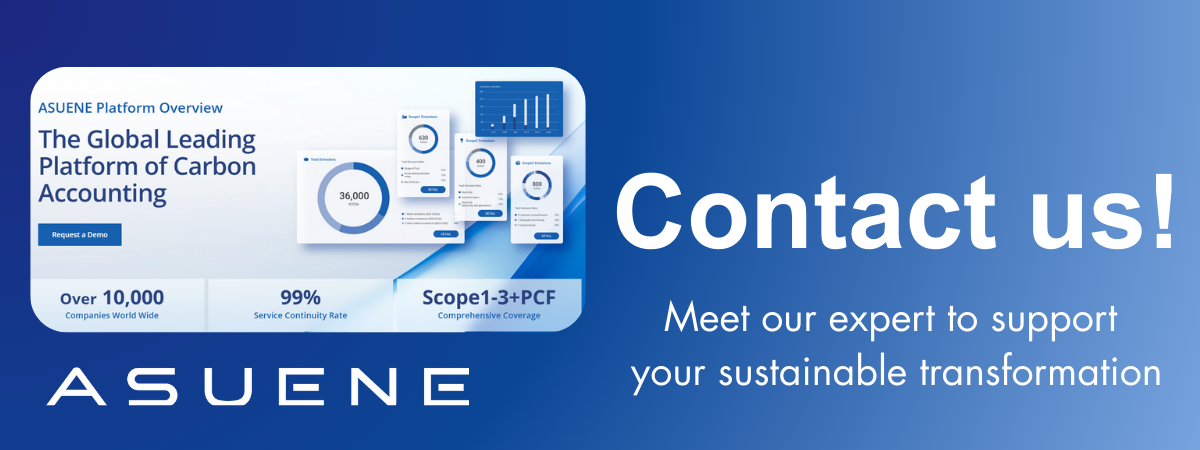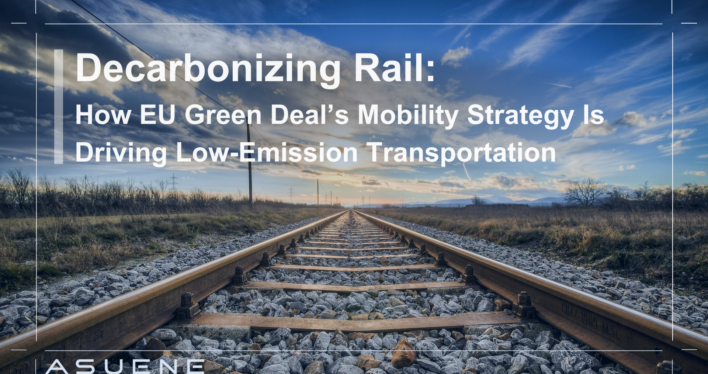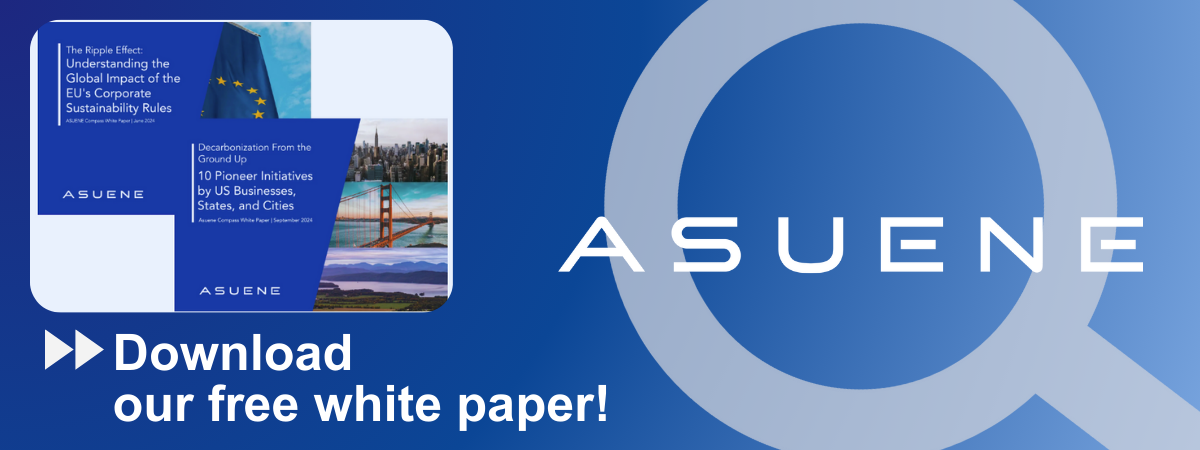- Article Summary
-
Overview: The Strategic Role of Rail in Europe’s Climate Future
Europe’s decarbonization journey hinges on revolutionizing transportation: a sector responsible for nearly 25% of the EU’s greenhouse gas (GHG) emissions. Among the varied transport modes, rail stands out as a sustainable alternative, producing less than 1% of transport emissions in the EU. Electrified railways, in particular, are a potent tool for reducing carbon footprints while supporting mobility and freight logistics.
Despite this advantage, rail still plays a limited role in the EU’s transport matrix: approximately 7.5% of passengers and 17.6% of freight traffic, as per Eurostat 2024. The European Commission has recognized this untapped potential. The EU Green Deal and the Sustainable and Smart Mobility Strategy (SSMS) outline a transformative vision: by 2030, high-speed rail traffic should double; by 2050, freight rail volumes should triple. Critically, the overarching goal is to reduce transport-related GHG emissions by 90% by 2050.
This article explores how EU-level policies, innovation, and infrastructure development are making rail the centerpiece of a low-emission mobility transition.
Policy Foundation: The EU Green Deal and Smart Mobility Strategy
The European Green Deal, launched in 2019, laid the groundwork for decarbonizing the economy. Its transport component came into focus with the SSMS in 2020, which introduced a concrete roadmap for climate-neutral mobility.
Key policy instruments include:
Sustainable and Smart Mobility Strategy (2020; updated 2025): This strategy aims to double high-speed rail traffic by 2030, complete the core Trans-European Transport Network (TEN-T) by 2030, triple rail freight traffic by 2050, and digitize and automate rail traffic management systems across the EU.
Corporate Sustainability Reporting Directive (CSRD): Enforced starting in 2024 with reports due in 2025, this directive requires ESG reporting from large rail operators and manufacturers, enhancing transparency and accountability in the sector.
EU Taxonomy Regulation: This regulation classifies rail infrastructure projects and electrification as environmentally sustainable investments, thereby enabling the sector to access sustainable finance opportunities more easily.
Corporate Sustainability Due Diligence Directive (CSDDD): Effective from 2025 for companies with over 1,000 employees, this directive mandates that businesses conduct due diligence on environmental and human rights risks throughout their supply chains.
Simplification Omnibus (2025): Introduced in 2025, this legislative package delayed the implementation of some CSDDD thresholds until 2027 for SMEs and introduced opt-out clauses for specific sectors to ease regulatory pressure.
These instruments create a robust regulatory framework incentivizing rail investment, standardization, and sustainable finance alignment.

Innovation and Infrastructure: From Hydrogen Trains to Electrified Corridors
Rail’s decarbonization depends heavily on electrification and alternative propulsion technologies. As of 2024, approximately 56% of Europe’s rail network is electrified. The remaining lines, often in rural or cross-border zones, are being targeted with hydrogen or battery-electric trains.
Hydrogen trains are one of the most promising innovations in rail decarbonization. Alstom’s Coradia iLint, the world’s first commercial hydrogen-powered train, is now operational in Germany, France, and Italy. This rollout has been facilitated by European Commission co-funding through research and infrastructure programs such as Horizon Europe and the Connecting Europe Facility (CEF).
Battery-electric trains are also gaining traction, particularly for low-traffic and non-electrified lines. These trains offer an efficient and flexible solution to reduce dependence on diesel locomotives. Several pilot projects are currently underway in Austria and Scandinavia to evaluate the feasibility and scalability of battery-electric rail service.
Electrification remains a cornerstone of the EU’s sustainable rail strategy. Spain’s Mediterranean TEN-T Corridor is nearing 80% completion as of the 2025 update, demonstrating strong progress in one of Europe’s key logistics arteries. Meanwhile, Sweden and Finland are investing heavily in the development of 100% green freight corridors aimed at replacing diesel-powered trains with electric alternatives.
Infrastructure also includes digital signaling and automation. The European Rail Traffic Management System (ERTMS) is replacing national signaling systems with a unified EU-wide standard. This upgrade is expected to cut delays, improve safety, and increase energy efficiency across rail networks.
Barriers and Breakthroughs: Overcoming Modal Shift Challenges
Infrastructure bottlenecks are a major challenge. One critical issue is the lack of standard gauge across EU member states, such as the Iberian gauge still used in Spain and Portugal, which hinders interoperability. Additionally, many bridges, tunnels, and terminals are outdated and require significant investment to meet modern logistics and safety standards.
Cross-border interoperability also remains problematic. Differences in technical standards, operational rules, and language barriers continue to disrupt the seamless flow of freight and passenger rail traffic between countries, reducing efficiency and increasing cost.
Socio-political constraints play a role as well. New rail line developments often face public resistance due to land-use concerns and environmental impact. Furthermore, labor unions in the rail sector have expressed reservations about increased automation and digitalization, fearing job displacement and shifts in workplace dynamics.
Funding gaps continue to limit progress. While post-2025 increases in Connecting Europe Facility (CEF) funding are welcome, private investment remains cautious due to long return horizons. However, this is beginning to change with the introduction of green financial instruments. For example, in 2025, Deutsche Bahn issued a €1.5 billion green bond tied to electrification milestones and ESG-linked KPIs. ESG bonds and Taxonomy-aligned infrastructure funds are increasingly filling the investment gap, accelerating sustainable project rollouts. ESG bonds and Taxonomy-aligned infrastructure funds are increasingly filling the investment gap, accelerating sustainable project rollouts.
EU Rail Interoperability Challenges (2025+)
| Country | Technical Bottleneck | Interoperability Issue | Investment Plan (2025+) |
|---|---|---|---|
| Spain | Iberian gauge limits compatibility | Gauge mismatch with France | TEN-T standard gauge expansion |
| Portugal | Iberian gauge limits cross-border traffic | Limited integration with EU TEN-T core | Interoperable upgrades co-funded by EU |
| Germany | Aging infrastructure in eastern states | Varied electrification voltages | Digital signaling and track renewals |
| France | Legacy signal systems in rural areas | Non-standard automation systems | ERTMS rollout across rural networks |
| Poland | Freight corridor congestion | Fragmented cross-border signaling | CEF-backed modernisation of border hubs |
Conclusion: The Next Decade of Climate-Driven Rail Transformation
The EU’s rail decarbonization is no longer speculative. It is structured, funded, and politically endorsed. What lies ahead is execution:
By 2030, the EU aims to complete the TEN-T Core Network, fully implement CSRD disclosures, and digitize national rail systems with ERTMS. By 2040, the phase-out of diesel-only rolling stock and expansion of green corridors across all member states should be well underway. And by 2050, the EU intends to achieve full modal shift targets for both passenger and freight traffic.
According to European Environment Agency data and European Commission projections, shifting freight and passenger movement from road and air to electrified rail could reduce transport-related greenhouse gas emissions by up to 290 million tonnes of CO₂ equivalent between 2025 and 2050. This figure assumes full implementation of TEN-T infrastructure, CSRD ESG reporting, and member-state modal shift incentives. Passenger transport alone could yield savings of up to 75 g CO₂ per passenger-kilometer shifted, while freight rail offers over 60% less emissions than trucking on average. These cumulative savings reinforce why rail modal shift is central to the EU Green Deal climate targets.
The EU’s approach could serve as a blueprint for other regions. With the convergence of policy, innovation, and market incentives, rail is poised to redefine climate-smart mobility for the 21st century—on track and on time.
Why Work with ASUENE Inc.?
Asuene is a key player in carbon accounting, offering a comprehensive platform that measures, reduces, and reports emissions, including Scope 1-3. Asuene serves over 10,000 clients worldwide, providing an all-in-one solution that integrates GHG accounting, ESG supply chain management, a Carbon Credit exchange platform, and third-party verification.
ASUENE supports companies in achieving net-zero goals through advanced technology, consulting services, and an extensive network.


